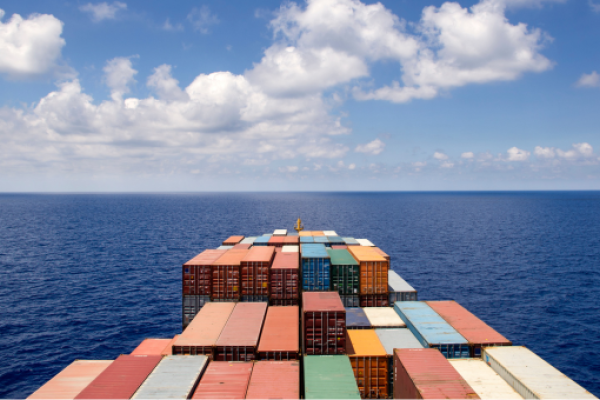
James Tian
Published: February 14, 2024
The Chinese Maritime Code (effective as of 1 July 1993) (the “CMC”) adopts Hague/Hague-Visby) Rules principles when it comes to exempting the carrier from liabilities. However, the bar has been set high and it is generally difficult for a carrier to prove that it has provided a seaworthy/cargo-worthy ship before and at the commencement of the voyage, and thus that the damage and/or loss to cargo is due to, inter alia, perils of the sea.
The reasons for this vary. Whereas it is safe to say each case is based upon the particular circumstances and the evidence presented, this could arguably be attributed to factors such as 1 China being a cargo friendly jurisdiction 2 there being only a handful of Chinese maritime court judges with sea going/ admiralty experience and 3 modern technological developments including the use of marine meteorological intelligence/analysis agencies, which have led to the line of thought that severe weather conditions at sea are mostly foreseeable, avoidable and can therefore be overcome.
The CMA CGM G. WASHINGTON Matter3
The CMA CGM G. WASHINGTON matter is a relatively recent example of the Chinese court’s unwillingness to allow a carrier to rely on the perils of the sea defence.
In that matter, after reviewing the evidence as well as the expert testimony, the Guangzhou Maritime Court reached the conclusion that the loss of containerised cargo at sea was not due to perils of the sea (also known as “heavy weather”), but the carrier’s failure in properly and carefully loading, handling, stowing, carrying, keeping and caring for the goods carried.
The matter concerned the shipment of, among other things, three 53-foot specialised containers (the “Containers”) from Yantian, China to Los Angeles, United States in December 2017.
During the voyage, there was a collapse of the containers stowed at bays 18, 54 and 58, resulting in one of the three Containers being lost overboard. A claim for loss of the cargo was submitted by the relevant cargo insurers. The carrier arranged for a cargo damage survey to be carried out onboard.
The surveyor’s conclusion was that the ship experienced severe rolling at the material time, which led to the Containers collapse. The incident was neither foreseeable nor avoidable, and the actions taken by the Master and crew at the material time were justifiable. The attending surveyor testified during the trial that:
The rolling amplitude of 20 degrees stated in the survey report was the inclination observed by the Master through the inclinometer. However, there was no corresponding navigational data to support that conclusion.
Whilst it is considered good practice to place empty containers on upper tiers with heavy/laden containers underneath, this was not always the case and the ship’s stowage plan showed heavy containers stowed at upper tiers with empty containers placed underneath.
The judges deciding the case were of the view that it was impossible to conclude that the lashing and securing for the containers that subsequently collapsed were adequate. They added that the onus is on a carrier to avail itself of the exemption for damage to/ loss of cargo caused by the rolling motion of the vessel in accordance with Article 51 of the CMC . Further, the carrier needs to provide sufficient evidence to prove that the rolling motion of the ship factually existed, was unforeseeable and unavoidable, and that there was a causal link between the damage to / loss of cargo and the rolling motion of the vessel.
The XIN QIN HUANG DAO Matter6
The XIN QIN HUANG DAO matter potentially marks the start of a new era in China as it is the first time in which the Chinese courts have accepted the perils of the sea defence.
The matter concerned the shipment of containers from Qingdao, China to Ensenada, Mexico in December 2019. The vessel repeatedly followed Weather Routing Service recommendations for the voyage. Despite this, she encountered bad weather including experiencing sudden large rolls at an angle up to 35° during the voyage, whereas the vessel’s maximum rolling angle (as designed) was 22°. The master reduced the vessel’s speed and later, the main engine safety alarm was triggered. The Master estimated that the waves were up to 8 meters and the wind had suddenly increased to force 8-9. As a result of the rolling, some 48 containers were lost overboard, and a further 33 containers collapsed.
Cargo claims were pursued by subrogated cargo underwriters before the Shanghai Maritime Court. The cargo interests asserted that the carrier had chosen the North Pacific Ocean winter route, which was the same route taken by the CMA CGM G. WASHINGTON, in order to save fuel/ costs, and that the risk of encountering severe weather/ sea conditions should have been foreseen such that a heavy weather defence to the claim should not be available. They further alleged that there was a failure to “properly and carefully load, handle, stow, carry, keep, care for…the goods carried”.
The experts retained to investigate the incident and help defend the claims were of the view that the container lashing had been properly maintained, and the securing was in accordance with the pre-approved cargo securing manual onboard, and that all records had been well kept.
In January 2022, the Shanghai Maritime Court found that the collapse of stow and loss of containers was most likely not due to improper lashing or inadequate securing of the containers, but rather the heavy weather that the vessel had encountered during the voyage.. As regards the choice of route, the Court found that the Master’s decision to follow the guidance of the Weather Routing Service was correct, and even if the Master could be criticised for doing so, any such failure does not extend beyond negligence in respect of which there was a defence, namely negligent navigation.
In December 2022, the Shanghai Higher People’s Court upheld the decision of the Shanghai Maritime Court, holding that the direct cause of the incident was heavy weather and rolling at large angles which the ship had taken reasonable care to avoid, and this was therefore an incident caused by “perils of the sea” for which the carrier was not liable.
Significance and Lessons Learned
China has traditionally been perceived as a cargo friendly jurisdiction, although it seems that stance might now be changing as the Chinese courts have started to recognise the heavy weather defence. Although the aforementioned judgement in the XIN QIN HUANG DAO matter might not be binding on other courts in China, there is now “precedent” so to speak, and provided that the facts and circumstances allow, it is possible that the decision will be followed by the 11 maritime courts in China, as well as the upper-level courts which any appeals would usually reach.
In this respect evidence preservation is key, including being able to demonstrate (among other things) that the choice of route was well planned and based on the available weather forecasts, routing reports and environmental criteria etc.; that the cargo/ containers were secured in accordance with the vessel’s Cargo Securing Manual and other applicable provisions and that securing arrangements were checked regularly throughout the voyage by the ship’s crew, with appropriate logbook entries being recorded.
Finally, it is worth remembering that local advice is likely to be needed to advise/ guide on the expert evidence to be used in Chinese litigation, and the Club can assist with this where needed.
1 Article 51 of the CMC is a variation of Article 3 of the Hague Rules 1924.
2 Article 51 (3) of the CMC.
3 China Ping An Property & Casualty Insurance Co., Ltd. Shenzhen Branch vs. CMA CGM and CMA CGM Shenzhen Branch (China) Co., Ltd. Shenzhen Branch, Contract of Affreightment Dispute, (2019) Yue 72 Min Chu No.1002.
4 Article 48 of the CMC.
5 Article 51 provides that, “the carrier shall not be liable for the loss of or damage to the goods occurred during the period of carrier's responsibility arising or resulting from any of the following causes:
…
(3) Force majeure and perils, dangers and accidents of the sea or other navigable waters;
…
The carrier who is entitled to exoneration from the liability for compensation as provided for in the preceding paragraph shall, …, bear the burden of proof.”
6 Asia Pacific Property & Casualty Insurance Co., Ltd Weifang Central Branch vs. COSCO SHIPPING Development Co., Ltd. Contract of Affreightment Dispute, (2021) Hu 72 Min Chu No. 82.
7 Article 48 of the CMC.
8 Article 51 The carrier shall not be liable for the loss of or damage to the goods occurred
during the period of carrier's responsibility arising or resulting from any of the following
causes:
(1) Fault of the Master, crew members, pilot or servant of the carrier in the navigation or
management of the ship;
9 Full judgement can be seen at (2022) Hu Min Zhong No. 335.


